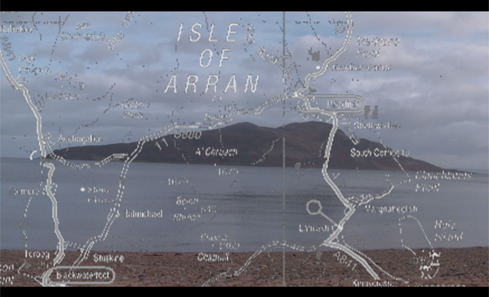
This month saw the world premiere of two new films, shot on location in Wester Ross and Arran, exploring coastal and island communities’ responses to the sea and Marine Protected Areas. As the exhibition prepares to tour Scotland, we dive in for a closer look.
The new films, by Scotland-based artists Margaret Salmon and Ed Webb-Ingall, explore some of the most beautiful and diverse marine ecosystems in the world. They are presented as part of Shore: How We See The Sea - an ambitious multi-arts and science project curated by art and environment organisation Invisible Dust with support from Creative Scotland and the Wellcome Trust.
This collaboration has led to wonderful ethereal underwater footage of these threatened marine environments and the posing of vital questions such as who owns the sea and how do we protect it.- Alice Sharp, Invisible Dust
The project aims to spark nationwide conversations about “how we see the sea” and the role of Marine Protected Areas (MPAs) in preserving or ‘shoring up’ our endangered aquatic worlds. It will inspire, connect and reflect responses of Scotland's coastal communities to the MPAs, two years after their legal designation in 2016.
Shore launched on the Isle of Arran in July with screenings of the films (courtesy of mobile cinema, the Screen Machine) alongside story recording sessions with community heritage organisation Local Voices, an archive film event Made By The Sea presented by A Kind Of Seeing, and hands-on activities for the community. It will now tour across Scotland until April 2019 to communities with close connections to the sea and MPAs, from Barra to Edinburgh.
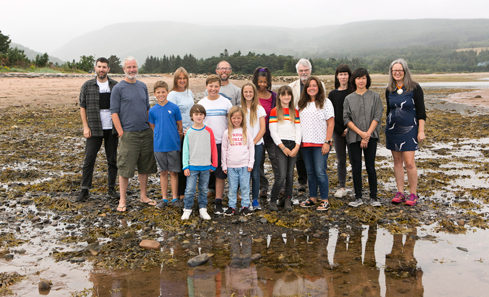
Alice Sharp, Director and Curator of Invisible Dust, explains: “The exploration of the responses of the local communities to the Scottish Marine Protected Areas highlighted by the two ‘Shore’ filmmakers Margaret Salmon and Ed Webb-Ingall are passionate, contradictory and fascinating. The artists’ collaboration with the marine scientists has led to wonderful ethereal underwater footage of these threatened marine environments and the posing of vital questions such as who owns the sea and how do we protect it.”
Alongside the screenings there will be additional creative and scientific content co-curated with each host venue providing local context; interactive community ceilidhs led by Local Voices; and opportunities for everyone to contribute to an interconnected project network forming a ‘chain’ conversation across Scotland as all Shore participants and audiences are invited to respond to the ideas, thoughts and learnings of the previous tour location.
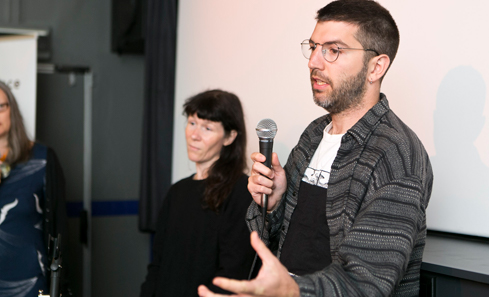
Throughout ‘Shore’, voices, texts, impressions and images will be gathered and shared online and across tour partner locations to create an impression of the national picture around the social, economic and environmental implications of MPAs. Exploring the complex perspectives and perceptions, Shore aims to encourage a wider national awareness and open up dialogue around the challenges of caring for our natural resources in Scotland and the UK.
Award-winning filmmaker Margaret Salmon (recently nominated for the prestigious Jarman Award 2018) is well known for her mystical atmospheric filming of natural settings concentrates on filming indigenous habitats and species, as well her own perceptive viewpoint of human interactions with the sea, both those of locals and of tourists.
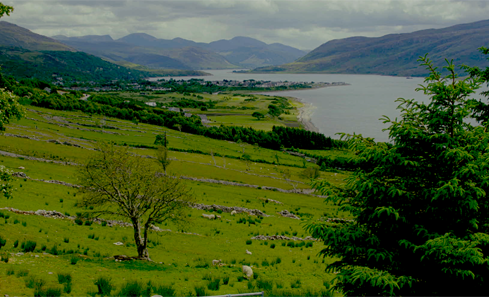
For Shore, Margaret created new film Cladach, shot on 35mm in the Wester Ross region of North West Scotland. Filmed principally on location, with additional filming of specific species occurring in tanks and local aquariums, Salmon explores historical filming techniques used by pioneers of natural history filmmaking.
She has been influenced by the early works of Jean Painlevé, and the BFI ‘Secrets of Nature’ series and links the film to her fascination with their use of acoustic music and filming techniques of the human and natural world.
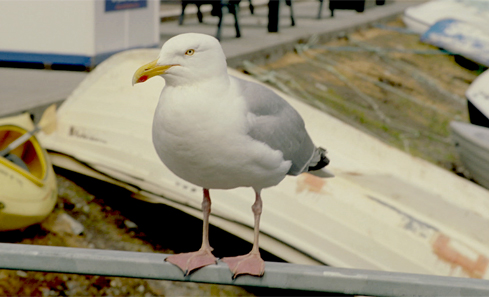
Salmon’s filming revolved around a single community, in Ullapool, existing along the shoreline of the MPA. Her portrayal of the rhythm of town life provides a space to allow different attitudes and ideas around coastal life to emerge. Her focus then contrasts the local human activity – engaging with international visitors, local fishermen, ferry passengers, charity shops, pubs and ceilidhs – with that of the natural world.
Donning her wetsuit, Salmon shot an aquatic study of common indigenous species of Northwest Scotland: Maerl Beds, jellyfish, cup corals, anemones, serpulid worms and others.
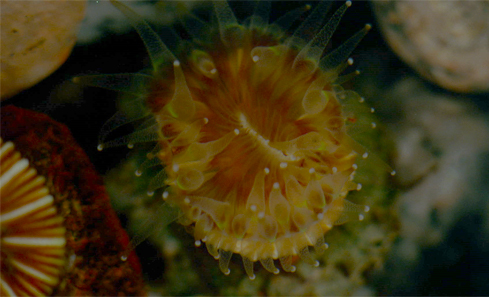
The soundtrack of Cladach marks the transition and back of human to sea creature activity - from everyday noise of cars and cash machines to the harbour squalls of sea birds and aquatic recordings supplied by the Scottish Association for Marine Science.
Ed Webb-Ingall is a community video maker who is interested in how communities’ voices are heard through video making. Having worked in community film-making for 10 years, Ed spent the past year building relationships with local groups in Scotland, screening community videos and hosting workshops, allowing locals to contribute their ideas about the sea, raising pertinent questions such as ‘Who owns the sea?’. The film highlights their responses along with those from local fishermen.
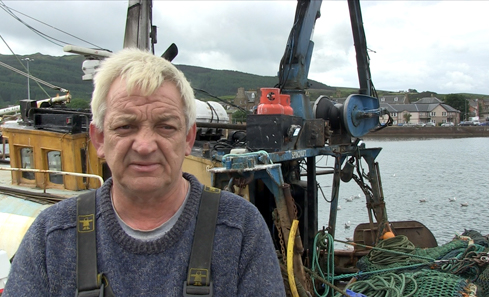
He is conscious of his position as an outsider. “My interest is placed alongside those of the participants and will not outweigh them," he tells us, "Instead we will work together to develop a project that will hopefully be of benefit to all who participate”.
Ed Webb-Ingall began conversations between people from across a diverse range of Arran communities – a retired couple, children, a novelist, people from COAST conservationists cleaning a beach – and others including a marine biologist, trawlers, creelers and legal professionals with a focus on water rights. The aim of his video is not to resolve anything, but to provide a trigger to ask further questions and continue the conversations we see happening on screen, to understand the role and impact of Marine Protected Areas for those people who live near them and work with them.
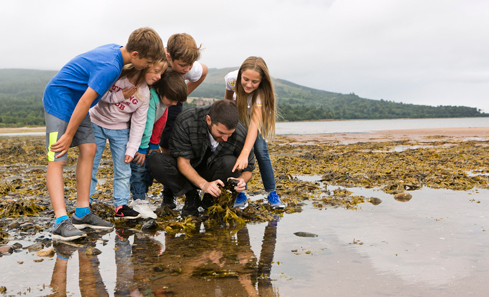
Speaking about the project, Amanda Catto, Head of Visual Arts at Creative Scotland, said “Through Shore, Invisible Dust are offering an important platform for artist filmmakers to raise awareness of key environmental issues through community filmmaking. The resulting tour will also give communities throughout Scotland the opportunity to engage with the films and explore their response to them.”
Alongside screenings of the artists’ films there will be additional creative and scientific content co-curated with each host venue to provide a unique local context, as well as opportunities for everyone to contribute their own thoughts and observations. This will create a ‘chain’ conversation across Scotland as all Shore participants and audiences are invited to respond to the ideas, thoughts and learnings of the previous tour location.
Final tour dates will be announced on the tour website www.shorescotland.com.
Shore is funded by the National Lottery through Creative Scotland’s Open Project Fund with the additional support of the Wellcome Trust and scientific partners Scottish Natural Heritage, Scottish Association for Marine Science (SAMS), and University of Edinburgh.
The films will be toured in partnership with LUX Scotland and Regional Screen Scotland.
Image credits: